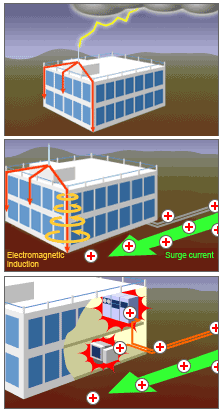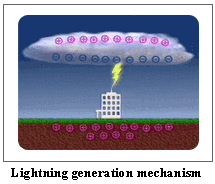LIGHTNING
Lightning usually claims only one or two victims at a time and usually does not cause the mass destruction left in the wake of tornadoes or hurricanes. Lightning generally receives much less attention than any other weather hazards. During a thunderstorm, each flash of cloud to ground lightning is a potential killer. In the United States, for instance, an average of 62 people is killed each year by lightning while hundreds are injured. Of the victims who were killed by lightning in 2007: 98% were outside, 89% were male, 30% were male between the ages of 20 – 25, 25% were standing under a tree, 25% occurred on or near water. However, lightning deaths can be prevented only if people are aware of the dangers and seek shelter in a building or a hard topped vehicle. Lightning can strike as much as 10 miles away from the rain area in a thunderstorm. That is about the distance that you are able to hear the thunder from the storm. If you can hear the thunder from a storm, you are close enough to be struck by lightning.
In most cases the mechanism for occurrence of thunder clouds is rising air currents due to the air being heated near the ground by strong sunlight. The air in this rising air current is cooled, and the charge is separated when hail is generated, so the thunder clouds grow large due to the effect of electricity being generated. Normally, a positive charge accumulates in the top of a thunder cloud and a negative charge accumulates in the bottom, so positively charged static electricity is induced near the ground surface. In this way, a strong electric field is generated between the thunder cloud and the earth, and when this exceeds the insulation capacity of the air, lightning is generated.
|

 Lightning has fascinated and excited humans for as long as they have watched the skies. Meteorologists know the cloud conditions necessary to produce lightning, but cannot forecast the location or time of the next stroke of lightning from a storm. At any moment, there are as many as 1800 thunderstorms in progress somewhere on the Earth, and each is producing deadly lightning.
Lightning has fascinated and excited humans for as long as they have watched the skies. Meteorologists know the cloud conditions necessary to produce lightning, but cannot forecast the location or time of the next stroke of lightning from a storm. At any moment, there are as many as 1800 thunderstorms in progress somewhere on the Earth, and each is producing deadly lightning. Mechanism of lightning occurrence
Mechanism of lightning occurrence


